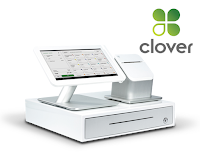Credit Card Processing changes ahead for Businesses that Accept Credit Cards
Credit Card Processing changes ahead for Businesses that Accept Credit Cards
 |
| Accept Credit Cards |
The traditional magnetic stripe swipe card is shifting to a chip-based EMV card, already in use in Europe. The shift is due to security concerns from issuers and as a way to put a dent into the annual $5 billion in card fraud. (EMV stands for Europay, MasterCard, and Visa, which developed the card.)The credit-card issuing giants (MasterCard, Visa, American Express and Discover) have given the October deadline to businesses to switch over to newer point of sale pinpads, or be liable for their losses via data breaches.
The U.S. is the last major market to still use the old-fashioned swipe-and-sign card processing system, and it’s a big reason why almost half the world’s credit card fraud happens in America, despite the country being home to about a quarter of all credit card transactions.
Below are several frequently asked questions and brief responses:
1. Why are EMV cards more secure
than traditional cards?
It's that small, metallic square
you'll see on new cards. That's a computer chip, and it's what sets apart the
new generation of credit cards.
2. How do I use an EMV card to make a purchase?
Just like magnetic-stripe cards, EMV
cards are processed for payment in two steps: card reading and transaction
verification.
However, with EMV cards you no
longer have to master a quick, fluid card swipe in the right direction. Chip
cards are read in a different way.
3. Is card dipping the only option?
Not necessarily. EMV cards can also
support contactless card reading, also known as near field communication.
 |
| Credit Card Processing Changes |
4. Will I still have to sign or enter a PIN for my card transaction?
Yes and no. You will have to do one
of those verification methods, but it depends on the verification method tied
to your EMV card, not if your card is debit or credit.
5. If fraud occurs after EMV cards are issued, who will be liable for the costs?
Today, if an in-store transaction is
conducted using a counterfeit, stolen or otherwise compromised card, consumer
losses from that transaction fall back on the payment processor or issuing
bank, depending on the card's terms and conditions.
6. So by Oct. 1, 2015, the transition to EMV technology will be complete?
Not exactly.
Although the upcoming deadline is
strong encouragement for all payment processing parties to become EMV-compliant
as soon as possible, experts do not believe everyone will comply by that da
7. If I want to use my chip-card at a retailer that doesn't support EMV technology yet, will it work?
 |
| emv chip based credit cards |
8. Will I be able to use my EMV card when I travel outside the country?
Yes and no.
The U.S. is the last major market
still using the magnetic-stripe card system. Many European countries moved to
EMV technology years ago to combat high fraud rates. That shift has left many
U.S. consumers who have magnetic-stripe cards looking for other forms of
payment when they travel.
If you are a business that accepts credit cards and you have questions regarding the upcoming changes or if you need to purchase new card processing equipment to comply with the new regulations contact Quantum Merchant Services Today !!
Quantum Merchant Services
7300 Hudson Blvd N
Suite 255
Oakdale Mn 55128
1-800-815-3123


Great post, thanks for sharing such a great information. yes now a days fraud is a big issue. and EMV is the great solution for fraud issue. i am contacting Alliance Bankcard Services for my EMV. Yes no doubt EMV cards more secure than other cards.
ReplyDelete